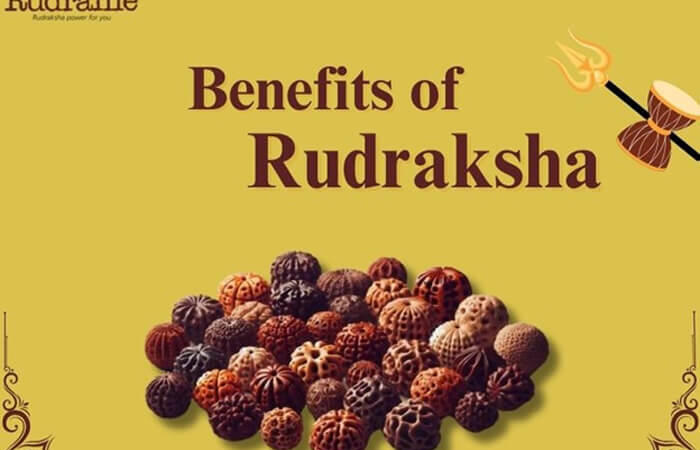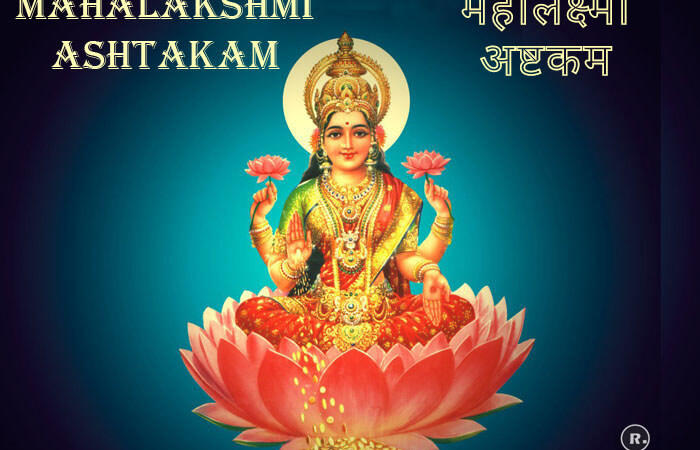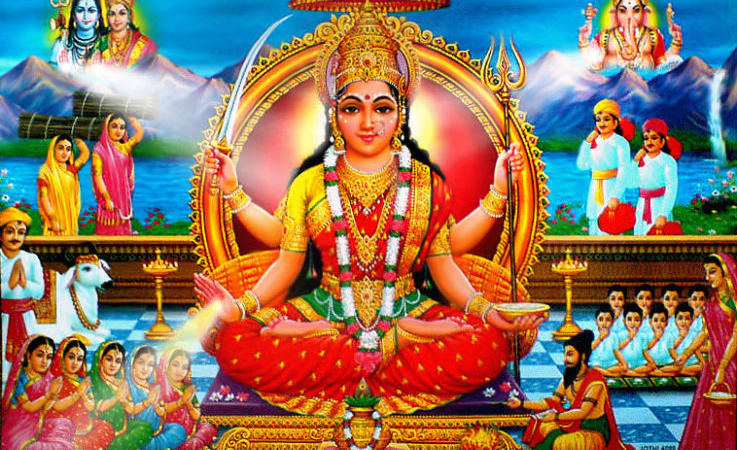10 of the Most Important Hindu Gods
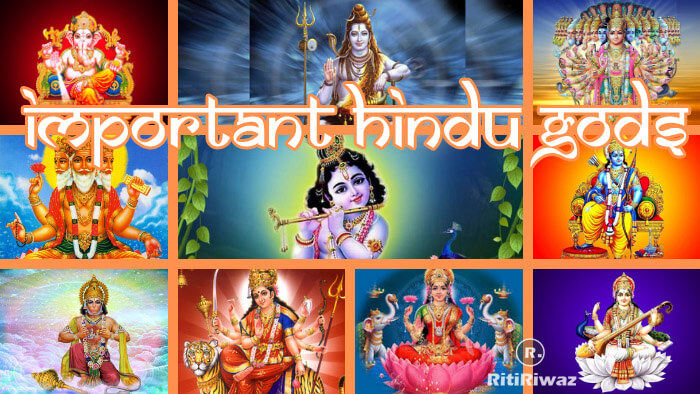
India is not a country… India is a world. Intense are its perfumes and flavors. And so are its colors, which are totally consonant with those of Hinduism itself. Contrary to popular Western belief, Hindu deities are not the individual gods of a polytheistic faith, but rather different representations of particular aspects of the one God, the source, Brahman.
The human or physical representation of Brahman’s aspects or attributes in the form of deities is a vehicle for the devotee to focus his or her attention, devotion, or meditation on that particular aspect or attribute in a form more easily visualized and held in the mind.
The many deities of Hinduism, which may be seen as reflecting different aspects of Brahman, are represented by images, with diverse features, posture, dresses, and attributes. There is, however, a range of ways of representing a particular deity, which may well refer to several different qualities. In some cases, symbols are used to show that a deity belongs to a particular group or family, as in the case of certain deities associated with Vishnu, for example.
In addition, some symbols belong to the common heritage of Hinduism or more generally of India. Images may be made from metal, stone, wood, plastic, etc. But the image only becomes a murti (an embodiment of Brahman) through a special act of consecration as it is installed in the temple or home and only then becomes a focal point for worship.
Sometimes an image is only consecrated for a specific period of time, as in the case of a festival (after which it will be destroyed, perhaps as part of the concluding ritual of the festival). Each deity is associated with a vehicle (a bird or animal on which it travels). The vehicles are used in Indian religious art to reflect or extend the powers of the deity with which it is associated.

1. Ganesha image is one of the most distinctive of Hinduism. Elephant’s head and a human body. Often colored pink. The elephant’s head is symbolic of gaining knowledge through listening and reflection. The two tusks, one whole and the other broken reflect the existence of perfection and imperfection in the physical world. The ‘pot belly’ reflects an ability to digest whatever experiences life brings and even “the whole universe” is contained inside it. It is also a sign of well-being and of his role as a provider of earthly riches.
Often depicted with one leg on the ground and the other folded, Ganesha symbolizes the balance between practical and spiritual life. a theme that is repeated in the symbolism of some of the objects associated with him. Ganesha may hold in hand a rope or noose (to trap the things which distract the mind), a goad or iron hook (to control desires), a bowl of sweets (earthly prosperity and well-being), axe, or trident (linking him to Shive). Shell, water lily, mace, and discus are other of his attributes.
His four arms symbolize various aspects of Hinduism such as the four Vedas, the four aims of Hinduism, and the four stages of life. His vehicle is a rat or a mouse (known for its ability to gnaw through barriers). The combination of the elephant and the rat or mouse ensures that all obstacles, of whatever size, are removed. Ganesha is worshipped as the deity who removes barriers and bestows wisdom and good fortune.
As god of wisdom, he is invoked at the beginning of books and maybe shown holding a tusk as a pen since he is regarded as the writer of the scriptures and hence the patron of schools and of the written word. In Hindu mythology, Ganesha is identified as the son of Shiva and Parvati. The custom of placing an image of Ganesha at doorways recalls the story of his courage in defending his mother. Having lost his head, this was replaced by that of the first living animal that came along, an elephant.
Trimurti
The three main forms or manifestations of Brahman, the Supreme Spirit or Power of the universe. The Trimurti is a concept in Hinduism in which the cosmic functions of creation, maintenance, and destruction are personified by the forms of Brahma the creator, Vishnu the maintainer or preserver, and Shiva the destroyer or transformer. These three deities have constituted the Hindu Triad or Great Trinity.
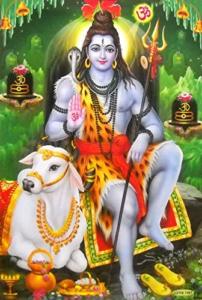
2. Shiva is one of the three main forms of Brahman and represents the power of destruction. But as the old has to be destroyed to give rise to the new, he is also seen by his followers as the lord of creation. Perhaps the greatest of the Hindu deities, he is given a range of titles which include Maha-deva (great god), Maha-yogi (great ascetic), and Nata-raja (lord of dance).
Shiva has over 100 names. His name means “auspicious” or “kindly,” for Shiva is the destroyer of illusion and ignorance that stands in the way of union and enlightenment. Shiva’s consort may take several forms and these reflect the different aspects of his character and qualities. Parvati reflects the gentle aspects whereas Durga and, even more so, Kali reflect the fiercer elements. Ganesha is one of Shiva and Parvati’s sons.
Shiva’s weapon is the trident, a reminder of his role in the whole process of creation, preservation, and destruction. It also reflects the three qualities of goodness, passion, and darkness, which are in all things in different proportions. Another feature of Shiva is his third eye which represents both spiritual insight and the ability to burn up anything which may hinder such insight.
The three horizontal lines on his forehead represent the three sources of light (fire, sun, and moon), or his ability to see the past, present, and future. The three lines may also, as with the trident, represent the three qualities of goodness, passion, and darkness.
Shiva is depicted with snakes around his neck or across his body. The snake alludes to the spiritual power which may be developed through yoga and also Shiva’s power to deal with death. Rosaries show his mastery of the spiritual sciences. He is often depicted sitting on a tiger skin, a symbol of the cruel forces of nature, over which he is lord.
Shiva’s vehicle is Nandi, a white bull that represents strength and fertility. As the bull is ridden by Shiva, it symbolizes the god’s control over these powers. Sometimes he sits in a meditative pose reflecting peace and perfect inner harmony. Shiva is the Lord of mercy and compassion. He protects devotees from evil forces such as lust, greed, and anger. He annihilates evil, grants boons, bestows grace, destroys ignorance, and awakens wisdom in His devotees.
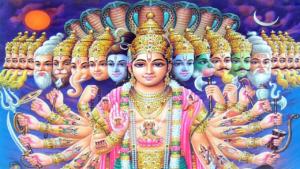
3. Vishnu is the sustainer. He may be depicted with two or four arms. Images of Vishnu combine compassion and strength. The four symbols most commonly associated with Vishnu are the conch shell which represents water and the first sound of creation, the lotus which symbolizes the unfolding universe, the mace which is interpreted as the power of knowledge conquering time and finally the discus, which is associated with the conquering of evil and ignorance.
Vishnu may be recognized by the U-shaped symbol on his forehead. His vehicle is Garuda, depicted either as a crowned eagle or as a bird with a man’s head. Vishnu is a powerful opponent of evil. The hood of snakes’ heads that shelter him represents the endless cycles of creation and reflects one of the central stories of creation in the Hindu tradition.
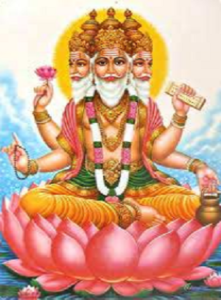
4. Brahma – The creator. Sometimes bearded. Has four heads and four arms, which respectively represent the four Vedas (ancient sacred books)and the four cardinal directions. Attributes: vase of water (symbolizing the water from which the universe evolved), rosary (for counting the passage of time), book, crown, sacrificial spoon, linking disc, alms bowl. His wife and partner is Saraswati.
His vehicle is a swan or a goose. As creation is the work of the mind and the intellect, Lord Brahma symbolizes the Universal Mind. He is worshipped mostly by seekers of knowledge (students, teachers, scholars, and scientists).
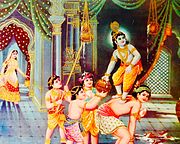
5. Krishna, the “one who attracts or draws people” and “drains away sins” is the eighth, and most important avatar of Vishnu. Embodies joy, freedom, and love. A wonderful and mischievous child grows into a youth loved by the gopis, the cowherd girls. His involvement with the gopis in amorous dance symbolizes a passionate union with God. Often depicted playing his irresistible flute to summon the gopis.
He is also shown as powerful, destroying the evil snake, Kaliya (who has poisoned the life-giving waters of one of India’s sacred rivers). He is typically depicted with dark blue skin, wearing a yellow loincloth and a crown of peacock feathers. The Gopis represent the individual souls trapped in physical bodies. Krishna’s favorite gopi, Rhada is symbolic of the individual soul awakened to the love of God and absorbed in such love.
The sound of Krishna’s flute represents the call of the divine for the individual souls. The gopis’ love for Krishna symbolizes the bond between the individual soul and God. In the forest, the gopis dance with Krishna and are absorbed in their love for him. The Hindu tradition is rich in poetry about the love of Krishna and Radha which is valued as an expression of human love and also as a symbol of the love of the soul for God.
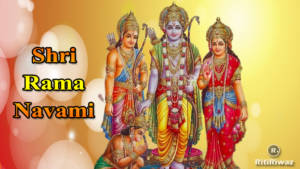
6. Rama which means “one who permeates and who is present in everything and everyone” is the seventh avatar of Vishnu. The Ramayana, which is one of the most popular stories in the Hindu tradition, tells of Rama’s exploits. As a young prince, he performs heroic acts and in due course wins the beautiful Sita as his wife after succeeding in bending a great war bow. Cheated of his rightful role as successor to his father the king, he goes off into exile.
Sita and his brother Lakshmana insist on going with him. One day Sita is kidnapped by the ten-headed demon Ravana and carried off to his stronghold on the island of Lanka. Helped by Hanuman, the god-king of the monkeys, Rama defeats Ravana and his army in battle and rescues Sita. They then return to their kingdom where Rama is given his rightful place as king. The Ramdarbar is the name given to the group of figures who appear in the Ramayana – Rama, Sita, Lakshmana, and Hanuman.
Rama is the model of reason, right action, and commendable virtues. He is often depicted with a tall conical cap which symbolizes his royal status. Rama represents the ideal man, as conceived by the Hindus. In the story of Ramayana, Rama’s personality depicts him as the perfect son, devoted brother, true husband, trusted friend, ideal king, and a noble adversary.
Sita and Rama are the model wife and husbands in the Hindu tradition. Sita is also understood as an avatar of the goddess Laxmi, the consort of Vishnu: when Vishnu took on human form as Rama, Lakshmi took on human form as Sita.
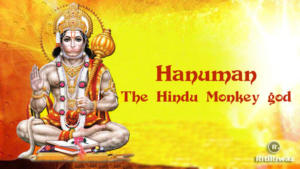
7. Hanuman, whose image is in the form of a muscled monkey, is associated with the Ramayana, the story of Rama and Sita. In the story, Sita, Rama’s wife, is kidnapped by the evil, ten-headed demon Ravana, who carries her off to his fortress on the island of Lanka. At great risk to his own safety, Hanuman finds Sita and then returns to help Rama build a bridge over to the island to rescue Sita.
During the ensuing battle, Rama’s brother Lakshmana is was fatally wounded. Hanuman was sent to fetch healing herbs that grow on a certain mountain. Unable to identify the herbs, he uproots the whole mountain and brings it back to the site of the battle thus saving Lakshmana’s life.
Images of Hanuman often show him holding the mountain in his hand. A model for human devotion to God, he is also depicted with paws clasped together in reverence. He represents strength and loyalty and exemplifies the idea that animals are also a part of the Creation. Hanuman is the son of the wind god, so he is able to fly and change shape at will. He is one of the few gods without a consort.

8. Durga means “The Inaccessible.” Though loving and kind to those who worship her, as the consort of Shiva, she also symbolizes the violent and destructive qualities of the Mother Goddess (Shakti). These qualities are explained by a story from the Hindu tradition according to which she was born fully grown from flames that issued from the mouths of the Trimurti and other deities. Who created her for the purpose of destroying the buffalo demon, a symbol of death.
Her weapons may include Shiva’s trident, Vishnu’s discus, bow and arrow, sword and shield, and javelin. Used for the destruction of evil and the protection of good. The eight arms with which she is often depicted represent health, education, wealth, organization, unity, fame, courage, and truth. Some images show Durga with ten arms.
Her vehicle is a lion or tiger which denotes her violent and aggressive qualities. A figure of power, she is a sort of feminine St George. Also called Divine Mother, Durga protects mankind from evil and misery by destroying evil forces such as selfishness, jealousy, prejudice, hatred, anger, and ego.
Kali, which means “black,” represents the terrifying aspect of the Mother Goddess, whose kindly or benign aspect is embodied by the goddess Laxmi. Kali is associated with eternal energy. Goddess of time and change. Usually depicted naked or wearing a predator’s skin, with disheveled hair, eyes rolling of intoxication. She has fang-like teeth. Her lolling tongue dripping with blood hangs from her mouth. Around her neck wears a necklace of skulls. She is usually shown with four arms, holding either severed heads or arms such as a dagger and a sword. She dances on the body of her consort, Shiva.
Though her hands are blood-stained, one of them may be raised in a gesture of assurance, in the midst of destruction. Kali embodies the Indian tradition of bringing together seemingly contradictory aspects of life. Some people link her with the ancestral Earth Mother, whose power was shown both in the fertility of the earth and in the receiving of the bodies of the dead. Kali represents the realities of life and death. Devourer of time (kala means “the force of time), Kali stands for the frightening, painful side of life which everyone who desires to progress spiritually must face and overcome.
Parvati, daughter of the Himalayas, represents the gentler qualities of the Mother Goddess. Her docile obedience to her husband, Shiva is seen as a model of the worshipper’s relationship to God. Although behind Parvati lies the power of the Mother Goddess, which is felt by many Hindus to be greater than that of all the other deities.
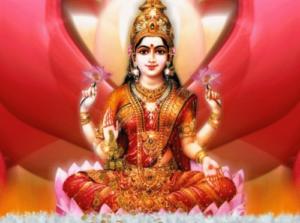
9. Laxmi, one of the forms of the Mother Goddess, is the goddess of fortune and wealth, and the consort of Vishnu. She is usually called “Shri.” She is associated with the festival of Divali as the bringer of blessings for the new year. A four-armed goddess of good fortune, she holds lotus flowers and pours out wealth in the form of gold coins.
She is also the goddess of beauty and as such is shown as young and beautiful, decorated with jewels. She is often seated on a lotus, which is a symbol of fertility and purity. In India, with its lack of a constant dependable supply of water, water is a symbol of plenty. Lakshmi’s vehicle is a white owl.
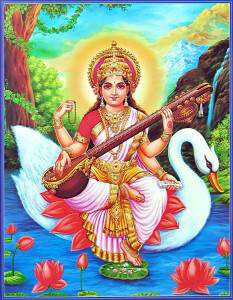
10. Saraswati is the consort of Brahma. Goddess of wisdom and music, and the arts in general. Usually depicted as fair-skinned, beautiful, elegant, and dressed in white garments. Attributes: the vina (an Indian stringed musical instrument), a flute, a manuscript, or a book.
Sanskrit, the ancient sacred language of Hinduism, is said to have been created by her. Her vehicle is usually a peacock, but she may also be seen with a swan or a goose (the vehicle associated with Brahma). Saraswati is the Goddess of learning, knowledge, and wisdom.
Suggested Read: Gods of Hinduism

